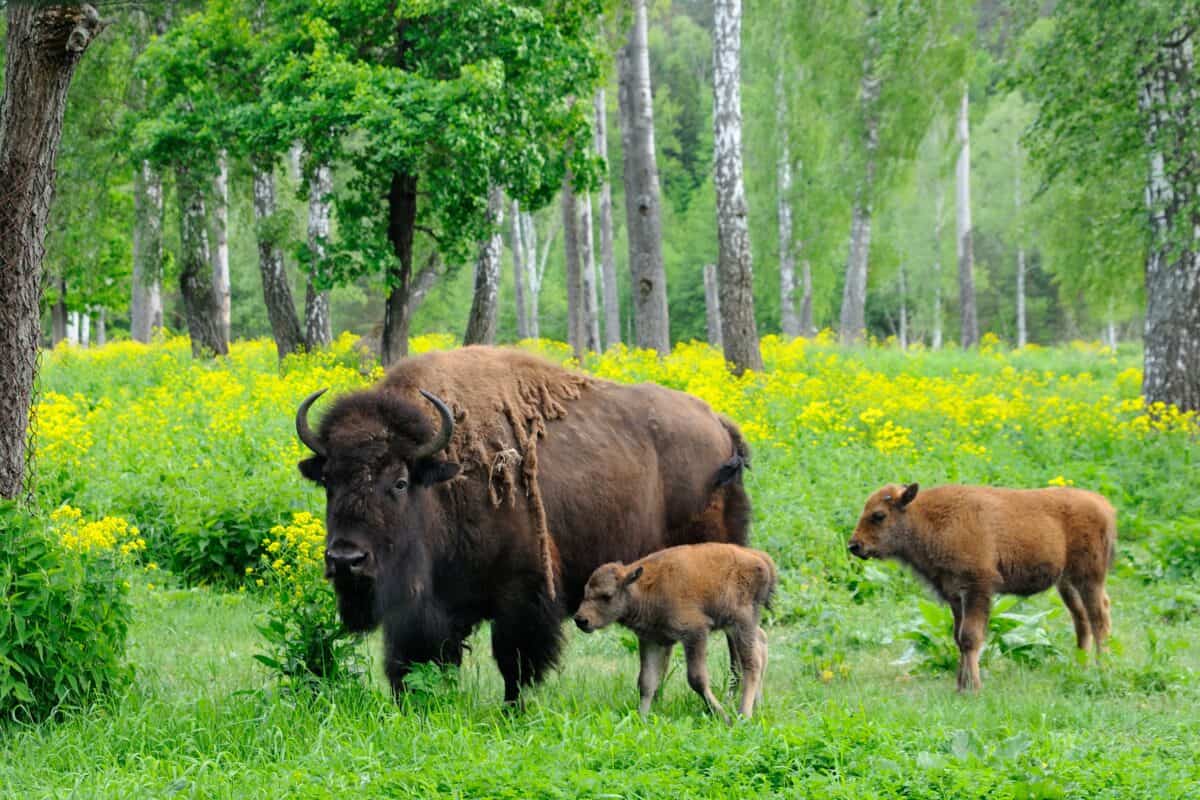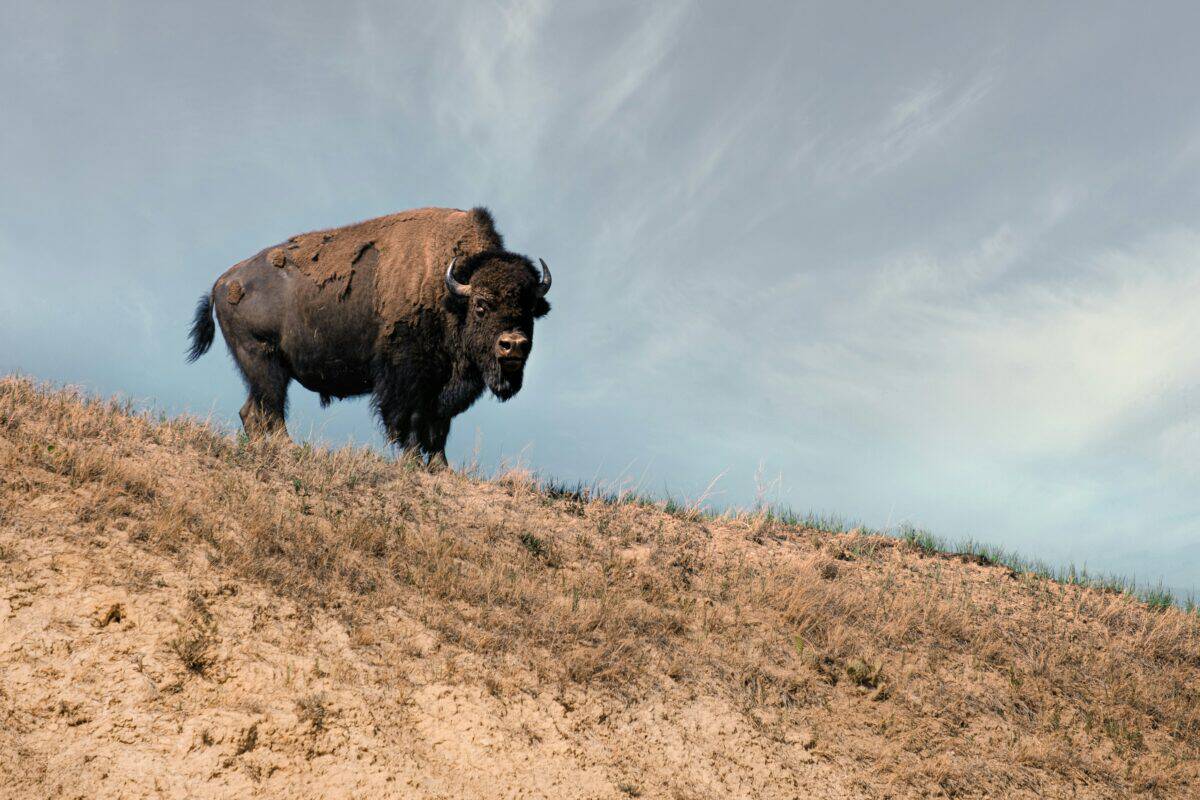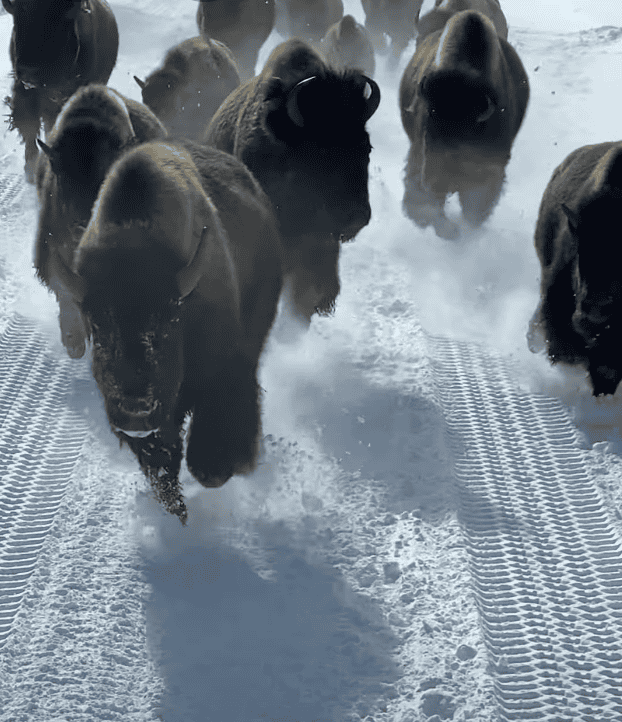In Yellowstone National Park, a herd of bison charge directly towards a bus full of tourists. What would you do in this scenario? In the picturesque setting of bison charging a bus, it’s hard to know if the tourists were mesmerised or terrified. Join us as we explore the bisons behavioral traits to further understand their actions in the video above.
Bison Aggression & Their Behavioral Traits

Bison have a territorial nature, therefore they can show aggressive behavior during mating season or when defending their offspring.
Aggression in bison is usually triggered by threats to their space or safety. This causes them to do actions such as head-butting, charging or making loud noises.
By understanding signs of aggression shown by bison, such as raised hackles, lowered head, or pawing at the ground, this can help avoid potential conflicts with bison.
Potential Danger

Had the bisons decided to charge at the bus, the situation could have been dire. Their massive bodies and strong horns could easily damage the vehicle, endangering everyone inside.
Bisons’ Strength

Bisons are incredibly powerful. Weighing up to 2,000 pounds, they can run up to 35 miles per hour. A collision with one would be devastating for any vehicle.
The Herd Moves On

Luckily, the bisons continued their path without targeting the bus. The travelers watched in awe as the majestic creatures passed by, leaving a cloud of dust behind.
The Tour Resumes

After the stampede, the tour guide reassured everyone. The bus slowly started moving again, and the tourists began to relax, though the memory of the close call lingered.
Bison Facts: Majestic Creatures

Bisons are not just strong; they are also smart and social animals. They communicate through grunts and can recognize each other even after long separations.
Bisons’ Habitat

These creatures roam in grasslands and prairies. They are native to North America and play a crucial role in maintaining the ecosystem.

Social Structure

Bisons live in herds. Females and their young form one group, while males often roam alone or in smaller groups. This social structure helps protect the young from predators.
Bison Diet

Bisons are herbivores. They feed on grasses, herbs, shrubs, and twigs. Their grazing helps keep the grasslands healthy and balanced.
Lifespan and Growth

Bisons can live up to 20 years in the wild. They grow quickly, with calves able to stand and walk within a few hours of birth.
Social Dynamics In Bison Herds

Within bison herds, social hierarchies and dominance structures play a huge role in maintaining order and reducing aggression.
Dominant bulls assert their authority through physical displays of strength. They take part in head-butting contests or vocal challenges to establish their status.
Subordinate bison are submissive. Their submissive actions include avoiding direct eye contact, yielding space to dominant individuals or retreating from fights.
Bison Defense of Their Offspring

Bison show aggression when protecting their offspring from threats. Mothers show protective instincts, often placing themselves between their calves and any dangers! These could be from humans or other animals.
Approaching bison calves provokes aggressive responses. This tells us the importance of maintaining a respectful distance.
Wrap Up

In the viral video above, in Yellowstone National Park, one can’t help but wonder about the mix of emotions that the passengers felt… Mesmerized by the sight or paralyzed by fear of the unknown. After delving into the behavioral traits of bison, this shed light on their actions and provided insight to the bisons actions.
If you enjoyed this article, check out our related article link below.
Next up:
Join our Forum for free today!


